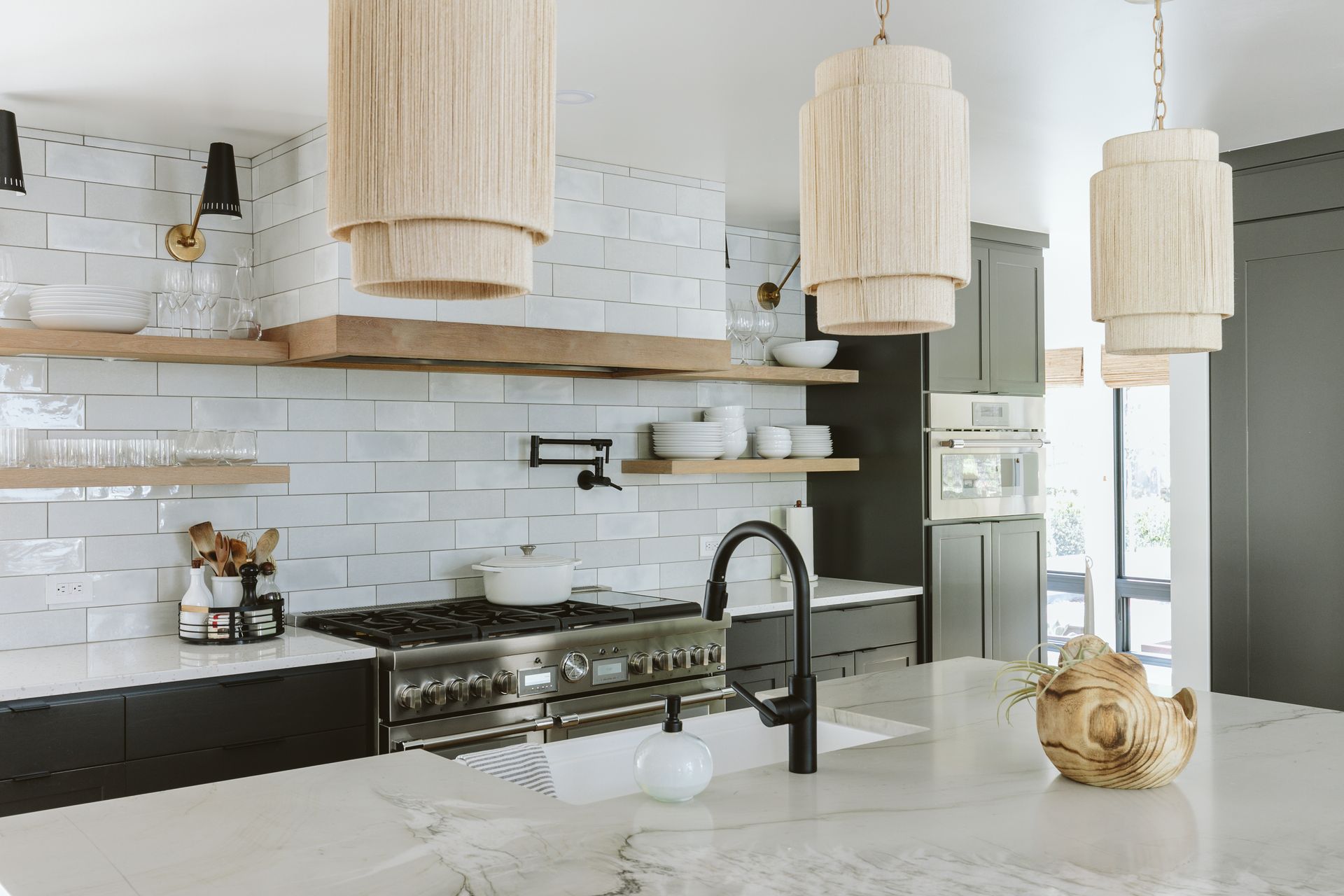How to Build a Portfolio as an Interior Designer: Tips for Success
Let’s talk about portfolios. You know, that magical collection of your work that gets you hired, impresses clients, and ultimately opens doors in the interior design world. Whether you’re just starting your interior design journey or you’re a seasoned pro looking to level up, building a killer portfolio is the key to showcasing your skills and getting noticed.
I know—portfolios sound fancy, right? But the truth is, it’s one of the most important tools you’ll have to stand out in a crowded design market. A well-curated portfolio is like your personal brand in visual form, telling potential clients, employers, or collaborators exactly what you’re about. It’s like your design resume, but cooler.
So, let’s dive in, shall we? I’m here to help you build a portfolio that’ll leave clients jaw-dropped and your inbox full of inquiries. No more struggling to explain what you do—let your portfolio do the talking.
Why a Portfolio Is Your Interior Design Secret Weapon
Before we get into the nitty-gritty of building a portfolio, let’s take a moment to understand why it’s so important. Your portfolio is your marketing tool, your first impression, and your ticket to growing your design career. Think of it as a curated collection of your best work, combined with your personality, your style, and your design process.
- Show Off Your Best Work: Your portfolio isn’t just about collecting every single project you’ve ever worked on. It’s about showcasing your most impressive, varied, and standout pieces.
- Build Credibility: When potential clients or employers see a well-organized and beautifully presented portfolio, they know you mean business. It tells them you know how to execute a design project from start to finish.
- Get Hired or Land Clients: Ultimately, a great portfolio will help you land jobs, secure clients, and build your reputation. It’s a visual resume that proves your skills.
Now that we’ve set the stage, let’s break down exactly how to build a portfolio that’ll make you shine as an interior designer.
1. Start With Your Best Work (Don’t Be Shy About It)
Look, I get it—it can be really hard to pick and choose what work to include in your portfolio, especially when you’re just starting out. But here’s the deal: quality over quantity. You’re not trying to flood your portfolio with a ton of projects to prove you’ve been busy. You’re curating a collection of your very best work to show off your design range, style, and expertise.
Here’s the strategy:
- Select a Variety of Projects: Don’t just include one type of design. Show the breadth of your work by featuring a mix of residential, commercial, and any niche design projects you’ve worked on. This will showcase your versatility as a designer.
- Highlight Your Strengths: If you specialize in modern minimalism or sustainable design, make sure that shines through. Clients want to see your unique skills and vision, so don’t be afraid to focus on what you do best.
- Only Include What You’re Proud Of: This might seem obvious, but it’s crucial. If a project didn’t turn out the way you envisioned, it’s okay to leave it out. Your portfolio should be full of work you’re excited to share and that aligns with the direction you want your career to take.
2. Show the Process, Not Just the Final Look
Okay, here’s the thing: Clients don’t just want to see the beautiful before-and-after shots. They want to understand how you got there. Your process is what makes you stand out from the competition. So, in addition to showcasing your finished spaces, be sure to show how you arrived at the final design.
Here’s how to do it:
- Include Mood Boards and Color Palettes: Show your design inspiration, from color palettes to furniture selections to materials. Mood boards are a great way to show how you conceptualize your design and the thinking behind your choices.
- Show Floor Plans and Sketches: These show your technical skills and your ability to work through spatial arrangements. If you use design software like AutoCAD or SketchUp, include some digital floor plans or renderings to give potential clients a peek into your design process.
- Document Your Problem-Solving Skills: Interior design isn’t just about making things pretty—it’s about solving problems and making spaces work for people. If you’ve worked on a tricky layout or overcame a design challenge, be sure to highlight that in your portfolio. Show the before and explain how you solved the problem in the after.
Your process speaks volumes about your problem-solving abilities and your expertise in handling real-world challenges, and clients love seeing that.
3. Make It Visually Cohesive
A portfolio is a visual representation of your design philosophy, so it’s important that your portfolio itself looks cohesive. Whether it’s an online portfolio or a physical one, the design and presentation should reflect your style as a designer. A cluttered, poorly designed portfolio won’t do you any favors (and yes, that includes badly edited photos).
Here’s what to keep in mind when making your portfolio visually cohesive:
- Consistent Branding: Use the same color palette, typography, and layout throughout the portfolio. This doesn’t mean it has to be boring, but it should be cohesive and professional.
- High-Quality Images: The photos you choose to showcase your work are
crucial. Invest in professional photography if you can—bad lighting or blurry images won’t do justice to your designs. If you’re taking the photos yourself, make sure the space is clean, well-lit, and styled. Quality matters.
- Minimalist Layout: Don’t clutter your portfolio with too much text or unnecessary design elements. Keep it clean and simple, letting your work take center stage. People need to be able to quickly browse through your portfolio without distractions.
This is your chance to show your attention to detail, so make sure your portfolio is as polished as the spaces you design.
4. Include Client Testimonials or Case Studies
A glowing client testimonial can make a huge difference in how potential clients or employers perceive you. If you’ve worked with clients (or even collaborators), ask them for feedback or reviews about your work. Including these testimonials in your portfolio not only adds credibility but also shows that your designs have made an impact.
Here’s how to incorporate client feedback:
- Client Testimonials: A few short quotes from satisfied clients can work wonders. Put them alongside photos of the finished space, and highlight the specific ways you made a difference for that client.
- Case Studies: If you’re not working with clients just yet, you can create a case study from your personal projects. Walk through the design process, the challenges, and how your design solutions improved the space.
Real-world validation is a powerful tool to show that you not only have great design skills but also a strong ability to work with clients.
5. Keep It Up to Date
This is a major pro-tip. Your portfolio is never really “finished.” It should be a living, breathing document (or website) that’s constantly evolving as you take on new projects, learn new skills, and refine your design process.
Here’s how to keep it fresh:
- Update Regularly: Every few months, review your portfolio and add new work. You don’t want your portfolio to feel stale, so continuously refresh it with recent projects.
- Add New Skills or Certifications: If you’ve taken courses, gained new certifications, or learned new design software, add that to your portfolio as well. It shows your growth and ongoing commitment to your craft.
An up-to-date portfolio demonstrates that you’re active in the industry, always growing, and ready for new challenges.
6. Consider Creating an Online Portfolio
In today’s digital age, an online portfolio is an absolute must. While physical portfolios can still be valuable in certain situations, a website allows you to showcase your work to a wider audience, plus it’s easier to update and share.
Here’s why an online portfolio is essential:
- Easy to Share: You can share the link with potential clients, employers, or collaborators in a matter of seconds. No need to lug around a bulky binder or worry about physical copies.
- Wider Reach: Having an online portfolio increases your visibility, especially if you’re targeting clients outside of your local area. Plus, it’s an opportunity to rank on search engines for terms like “interior designer portfolio” or “modern interior designer.”
- Professional and Accessible: A website is an opportunity to show your personality while also establishing credibility. Plus, it allows you to integrate other aspects of your work—like blog posts, social media links, or even an online shop.
Bonus Tip: Make sure your online portfolio is mobile-friendly. A lot of clients will check your portfolio on their phones, so you want to make sure it looks just as great on a smaller screen.
7. Tailor Your Portfolio to Your Target Market
Not all interior designers have the same clientele. Some might specialize in luxury real estate, while others focus on small apartments or eco-friendly spaces. It’s important that your portfolio speaks to your target market.
For example:
- If you’re focusing on high-end clients, include luxury design projects, detailed finishes, and premium materials.
- If you’re targeting commercial clients, show off your work in office spaces, cafes, or retail environments.
- If you’re in sustainable design, feature eco-friendly materials, energy-efficient spaces, and green design practices.
Your portfolio should be tailored to reflect your niche in the interior design industry and appeal to the type of clients you want to attract.
8. Keep It Personal, But Professional
Your portfolio is a reflection of you, so don’t be afraid to inject a little personality into it. While it’s important to keep things professional, you also want your portfolio to showcase you as a designer—the real you. Your personal style, your philosophy, and the way you approach design should come through in everything you create.
Think of your portfolio as the beginning of a conversation with potential clients or employers. Let it show what makes you unique and why they should want to work with you.
Conclusion
Building a portfolio as an interior designer is all about showing your potential clients, employers, and collaborators what you can do—and why you’re the right fit for their needs. Your portfolio isn’t just a collection of your work; it’s your personal brand in action. With a solid mix of high-quality projects, a clear design process, and some real-world feedback, your portfolio will be the key to unlocking new opportunities and growing your career.
So, go ahead—start building your portfolio today. Show the world what you can do, and let your work speak for itself. You got this!




